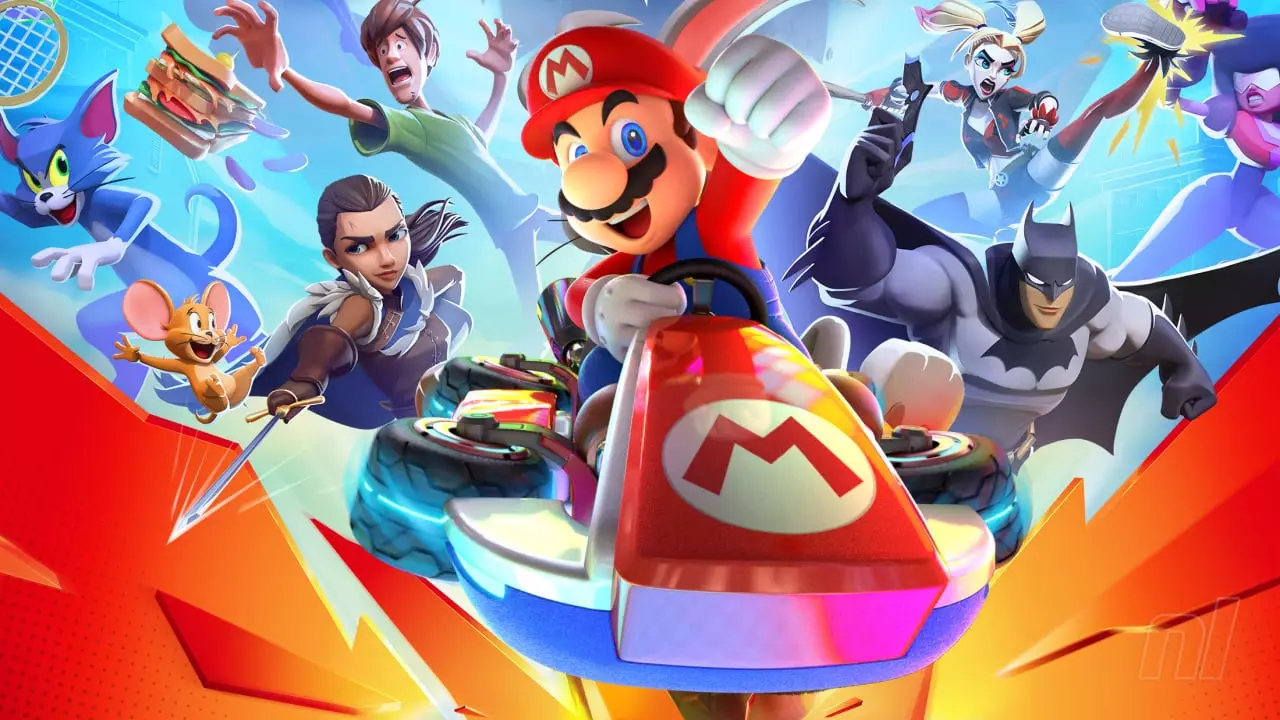The world of video game development is a treacherous landscape, where dreams often collide with harsh corporate realities. Just last month, Warner Bros. made headlines by announcing the closure of three of its studios, including Player First, responsible for the much-discussed yet short-lived MultiVersus. This drastic decision reflects the unpredictable nature of the gaming industry, where even well-conceived ideas can falter due to a multitude of factors, both internal and external. Yet before this significant downsizing, there were secretive projects brewing, including a racing game that aspired to emulate the thrilling essence of Nintendo’s Mario Kart franchise.
Project Moonlight: A Shimmering Idea Lost in the Shadows
According to insights shared by Colin Moriarty on the Sacred Symbols podcast, a studio called WB San Diego was crafting an innovative racing game, codenamed ‘Moonlight’. This ambitious project aimed to harness Warner Bros.’ vast intellectual property lineup, gathering characters from beloved franchises such as Adventure Time, Scooby-Doo, and Tom & Jerry. The development of this game, however, was fraught with complications from the get-go. There were multiple potential titles under consideration, like ‘WB Racers’ and ‘XDR (Cross Drift Racers)’, each suggesting a different flavor of racing fun infused with the unique personalities of Warner characters.
In a creative world, drawing inspiration from established giants like Mario Kart can be a double-edged sword. While the opportunity exists for innovation and competitive advantage, the very shadow of its predecessor looms large over any development effort. Despite early enthusiasm, Project Moonlight’s fate took a drastic downturn, plagued by staff turnover and conflicting visions concerning its launch strategy—should it adopt a free-to-play model or stick to a traditional paid title? Such uncertainties often spell disaster for projects, pushing them further into uncertainty.
Internal Struggles and Industry Context
An alarming whisper emerged from Moriarty’s source concerning a contentious atmosphere among team members. Those who dedicated their time and energy to Project Moonlight reportedly felt a deep-seated injustice, watching their fellow developers at Player First launch MultiVersus not once, but twice, while their own efforts faded into obscurity. Such a dynamic often occurs in larger studios, where the perceived favoritism towards one team can sow discord among others—creating an environment ripe for failure.
In contrast to Warner Bros.’ struggles, we’ve witnessed various well-recognized franchises attempting to break into the kart racing genre, from Disney Speedstorm to DreamWorks All-Star Kart Racing. Yet, none so far have captured the magic that has made Mario Kart the crown jewel of the genre. The inherent challenge of competing against a legendary title fuels the skepticism surrounding any new entrants into this domain. With Warner Bros.’ own tumultuous history now adding a layer of hesitation, it’s challenging to envision a successful launch for Moonlight even if it had come to fruition.
Lessons in Timing and Strategy
One of the crucial lessons one can glean from the unraveling of Project Moonlight is the importance of timing and strategic alignment in game development. The COVID-19 pandemic disrupted numerous sectors and had profound effects on team collaboration and project timelines across the board. With constant staff changes and unclear project goals, the potential for a creatively rich product diminished rapidly. Moreover, the decision to abandon console versions in favor of a delayed PC launch spotlighted the pitfalls of adaptability over innovation—an unfortunate trend that could ultimately hamper any future endeavors.
The premature shuttering of MultiVersus serves as a cautionary tale, highlighting the precarious position of a studio trying to ride on the coattails of its competition without fully understanding the underlying market dynamics. Would a Warner Bros. iteration of Mario Kart have found a dedicated audience? Sadly, the answer may remain an unsolved mystery, tucked away in the annals of cancelled projects and unrealized ambitions. The ever-evolving gaming landscape requires not only creativity but also resilience, market insight, and a strategy that evolves alongside trends—a combination that, for now, Warner Bros. seems to have missed.
As developers re-evaluate their strategies and pivot in response to market feedback, the question persists: will another brave attempt to invade the kart racing genre emerge from other studios or will the legacy of Mario Kart remain insurmountable? Only time will tell.

